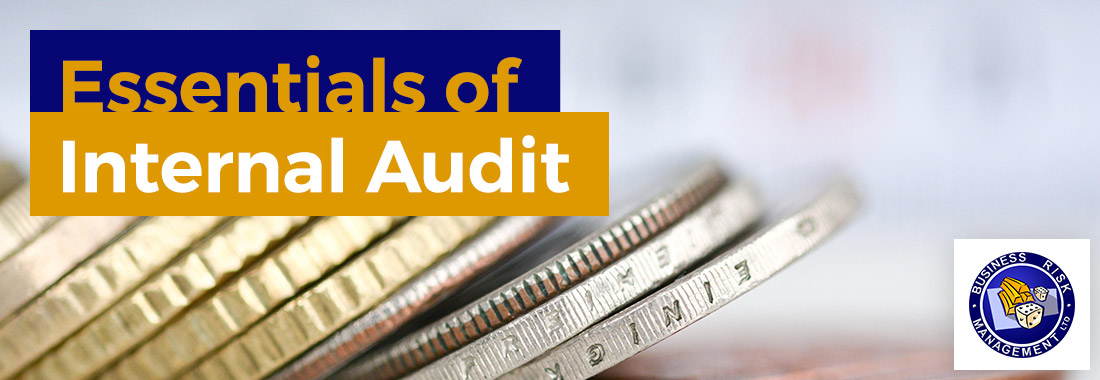Essentials of Internal Audit

Benefits
Why you should attend
- This course covers everything you need to know as a newcomer to Internal Audit regarding the most up to date audit practices.
- If you have staff who are new to Internal Audit you will want them to learn the best audit practices and be able to apply them efficiently.
- The course will introduce you to the worldwide best practice and how to apply it
- Maybe you have auditors who are returning to the function, or staff who are to be seconded to you for a period of time? You will want them to learn about the changing role of the audit function.
- Perhaps you work in a line function with responsibility for providing assurance to the board and need a fuller understanding of the internal audit role.
After completing this course you will be able to:
- Apply the theory and practice of modern internal audit
- Comply with the key aspects of the IIA professional standards
- Plan audit assignments effectively
- Work with other assurance providers to coordinate your efforts
- Develop testing plans to ensure optimum coverage
- Plan pre-meetings, audit interviews and clearance meetings with confidence
- Recognise the key steps to audit independence
- Write efficient and effective audit reports
Who should attend
Who should attend
- Newcomers to internal audit and those with less than 2 years experience.
- Personnel returning to internal audit after a number of years
- Established auditors who need practical guidance on the changing role of the function
- Personnel from other assurance functions
Course Details
Course Level
- This is a basic level course and delegates are not required to have any previous experience in Internal Audit to attend
- No advance preparation is required
- Delivery method – On-line-live (with exercises and role-plays to simulate audit scenarios and situations that new auditors will encounter)
After completing this course you will be able to
- Apply the theory and practice of modern internal audit
- Comply with the key aspects of the IIA professional standards
- Plan audit assignments effectively
- Work with other assurance providers to coordinate your efforts
- Develop testing plans to ensure optimum coverage
- Plan pre-meetings, audit interviews and clearance meetings with confidence
- Recognise the key steps to audit independence
- Write efficient and effective audit reports
CPE credits
Business Risk Management Ltd is a certified training provider and participants will earn 10 CPE credits in the Auditing field of study.
Modules
Day 1: The internal audit role
What is Internal Audit?
- Definitions and trends
- What it means to be an internal auditor
- How the profession has changed in the last few years
- The psychology of internal audit
- Exercise 1 – What is Internal Audit?
- The 2017 Professional Standards
- Internal audit responsibilities
- Integrity, objectivity and confidentiality
- Competency and independence
- Internal and external QA assessments
- Role in relation to risk management
- Role regarding fraud prevention
- FAQ’s
- Misconceptions about the role
- How does the role differ from other Assurance Providers?
- The need to coordinate efforts with other assurance providers
- Corporate Governance and internal audit
- The Audit Committee and the audit relationship
- Exercise 2 – Challenges for the inexperienced auditor
Audit Skills
- The skills required
- Analysing the skills
- Is IA a career or stepping stone?
- The competency framework
- Exercise 3 – The skills inventory
- Technical skills
- Analytical skills
- Appreciative skills
- Interpersonal skills
- Exercise 4 – Team skills exercise – Moon shot
The Internal Audit Role
- The changing role
- What is best practice?
- The Audit Charter
- FAQ’s about Internal Audit
- The different approaches to Internal Audit
- Risk Based audit
- Auditing the things that really matter
- Focussing on threats to achievement of business objectives
- Best practice – forget the petty cash
- Exercise 4 – Risk and controls – analysing a disaster
- Audit as a catalyst for change
- How does IA link with external audit
Audit assignment planning
- Preparing for an audit
- Terms of Reference for the assignment
- Determining sources of information
- The link between control, risk and objectives
- Determining the objectives of the function to be audited
- Evaluating the threats to achievement of these objectives
- Getting management input
- How to deal with your audit customers
- Personality differences – how to deal with different types of person
- Convincing the difficult audit customer
- Deciding who you will need to interview
- Meeting with management to discuss the audit
- Active listening
- Exercise 6 – Pre meeting with management
The audit in practice
- Preparing for an Audit
- Explaining the audit approach to staff of the function being audited
- Building a picture of the system and processes
- Preventative, corrective and detective controls
- Questions to ask
- · How to gather and evaluate information
- Documenting controls
- New IIA guidance on the key elements of control
- The approach to interviews
- How to decide who to interview
- Tips for success
- Exercise 7 – audit interviews
Audit testing
- Audit programmes
- Walk through tests
- Fieldwork Techniques (compliance, transactional, analytical review, sampling etc)
- How to decide the depth of testing required
- Audit working papers
- Gathering evidence
- Audit conclusions
- The clearance meeting
- Exercise 8 – the clearance meeting
Day 2: Delivering an audit assignment
Audit tools and measures
- Audit planning software
- Computer assisted audit techniques
- Explanation of IDEA/ACL
- Audit KPI’s (key performance indicators)
- Exercise 9 – measures of success
The Audit Report
- The challenges
- The need for reports with impact
- Who is the report for?
- How to grab attention
- The report as your shop window
- How do you know a good report when you see one
- Exercise 10 – What makes an excellent report?
How to write an effective report
- What management expects
- The IIA professional standards
- The problems with audit reports
- Knowing what to write
- Convincing the reader
- Overcoming the psychological dilemma
- How to ensure reports are taken seriously
- Getting the right balance
- Focussing the report guidance
- How to assess a report
- Exercise 11 – Assessing a draft report
Getting commitment to action
- Best practice reports – the way forward
- Why audit reports are taken as a criticism of management
- What causes attitudes to change
- Wording and layout ideas
- How to get 95% of your recommendations actioned
- The executive summary – do’s and don’ts
- The main report – best practice ideas
- Words and phrases to avoid
- Audit opinions – how to express them
- New IIA guidance on following up recommendations
- Examples of best practice reports will be shared
- Exercise 12 – writing a report in best practice style
- Recommendations and action plans
- Follow-up
About Phil Griffiths
Phil Griffiths, FCA

Phil Griffiths is founder and Managing Director of Business Risk Management Ltd.
A Chartered Accountant, he has over 30 years experience in risk management, Corporate Governance, internal audit and fraud prevention as practitioner, professional adviser, facilitator and trainer.
His areas of specialism are:
- Assisting Senior Management to identify, manage and then exploit the risks within their business via facilitated business risk management programmes
- Helping Internal Audit functions to implement world class standards.
- Developing fraud prevention, detection and investigation programmes
- Training both private and public sector organisations in all the above disciplines.
He has extensive experience of the European, Asian, Middle Eastern, and African markets having trained professionals from over 1000 organisations in these regions during the past 15 years
He has extensive experience of managing and auditing major International projects. He has also direct experience of negotiating major contracts (including the largest mobile telecommunications contract in the world at the time)
Phil has developed strategic alliances with professional bodies and world renowned training companies, to deliver training and consultancy services across Europe, Asia, the Middle East and Africa.
He has developed over 300 training courses on all aspects of internal audit, risk management and fraud and delivered them across the globe.
He has led risk management programmes for more than 120 private and public sector clients tailored specifically to include facilitated workshops, development of risk strategies and assistance with implementation
He is an accomplished author. His book ‘Risk Based Auditing’ is an international best seller and his new book ‘Enterprise Risk Management – the key to business success’ is receiving much acclaim
Phil has published research into many aspects of internal audit and risk management best practice, including “Strategic Risk management” “The Need to Co-ordinate Assurance Providers” and “The Expectations of Chief Executives towards Internal Audit and its future”
He is recognised as an accomplished and charismatic facilitator, trainer and lecturer and is in continual demand to speak at the most prestigious events on risk management, internal audit and fraud.
Schedule Overview
Course Fee and Timings
The fee for the 2-day course is GBP 500 (US$ 650) which includes comprehensive course materials. The course will consist of three 1.5 hour sessions each day.

